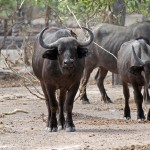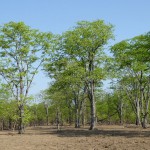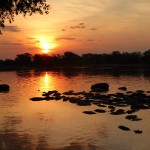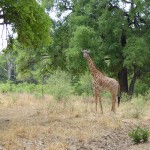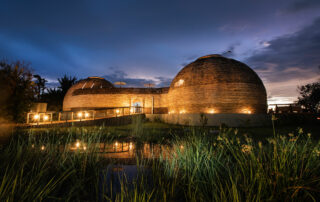LUAMBE NATIONAL PARK

At just 254 km² / 158mi², Luambe is one of Zambia’s smallest national parks (the smallest in Lusaka National Park). Situated on the eastern bank of the Luangwa River, it lies in the heart of the Luangwa Valley between Lukusuzi, and North and South Luangwa National Parks. It was declared in 1938 and is one of the oldest conservation areas in Zambia.
The wildlife found in Luambe is similar to that of its larger neighbouring parks and includes all the typical large herbivores and carnivores as well as some less well-known species. However, the animals of Luambe are generally present at lower densities than in the bigger parks with the advantage that Luambe is less crowded than its more famous neighbours.
Habitat diversity is enormous and within short distances the vegetation ranges from riverine forest, cathedral mopane woodland and floodplain acacia thickets to the sausage tree-dotted open grasslands of the Chipuka Plains.
There are over 200 species of bird in Luambe and elephant, lion and leopard populations are on the increase – so it’s well worth visiting now before everyone else catches on!
MORE INFO
- Area: 254 km² / 158mi²
- Founded in: 1938
- Province: Eastern Province
- Co-ordinates: 12.5355° S, 32.2427° E
Luambe National Park can only be accessed in the dry season between May and October; during the rainy season it becomes impassable. The limited accommodation closes for the green season.
The access roads are suitable only for high-clearance 4×4 vehicles. From the south it’s a 70km / 44mi (approximately three to four hour) drive from Mfuwe on dirt road through the Nsefu sector of South Luangwa National Park to Luambe’s southern Chakolwa Gate entrance. From Lundazi, it’s a 120km / 75mi drive on a dirt road to Luambe’s northern Chipuka Gate entrance.
The most common larger game species found in Luambe are puku, impala, warthog, bushbuck, waterbuck, kudu, hippo, zebra and buffalo. However, sightings of Cookson’s wildebeest, roan antelope, Lichtenstein’s hartebeest, eland, common duiker and oribi are also possible. Thornicroft’s giraffe are being seen more regularly. Elephant are common in Luambe and said to be on the increase.
Larger carnivores such as lion, leopard, spotted hyena, and wild dog are regularly seen. Smaller carnivores such as the serval, African wild cat, civet, blotched (large-spotted) genet and various mongoose species can also be found, especially during night drives.
Luambe National Park supports more than 200 species of bird. For the avid birdwatcher, birding can be spectacular with rarities such as the African skimmer, racket-tailed roller, Pel’s fishing owl, white-backed night heron, Angola pitta and Lilian’s lovebirds.
Large colonies of southern carmine bee-eaters can be found along the banks of Luangwa River in September and October. Other regularly seen species include spectacular raptors such as martial, tawny and African fish eagles as well as a variety of water birds including heron, ducks and geese.
LATEST NEWS
Major Updates at Kafue Lodge After Tragic Fire
A devastating fire in 2023 proved to be the catalyst for a fresh start and an exciting new chapter at Ila Safari Lodge in Kafue National Park. After the heart-breaking destruction of the old boma and some communal areas, the [...]
Iconic Kafue ‘Nest’ Camp Opening Early
Chisa Busanga, arguably one of the most unusual camps in Zambia, will be opening on 1 May 2024 rather than 1 June thanks to favourable conditions in Kafue National Park. With more drier ground available earlier than usual, guests will [...]
Date for 2024 KafueWild Trail Run Announced
Trail runners should mark Saturday 21 September on their calendars as the day to be at the starting line of the KafueWild race in Kafue National Park. A joint effort between the Department of National Parks and Wildlife, African Parks, [...]





